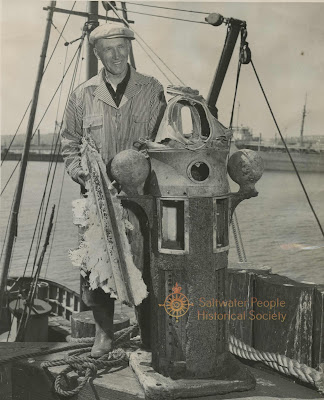"This name for the island at the entrance to Friday Harbor appears on the Wilkes chart dated 1841. Professor Meany states that 'The honor was intended for John G. Brown, the Mathematical Instrument Maker on the VINCENNES, one of the ships of the U.S. Exploring Expedition. The name was accepted by all later cartographers, and its first Admiralty usage appears to be in the log of H.M.S. PLUMPER, 20 March 1858. On that day the officer of the watch called the island 'ROBERT'S' but it was corrected to 'Brown's,' and the log for 25 March stated the vessel was 'at anchor inside of Brown Island.'
Originally Brown's Island, the apostrophe was later dropped, as on US Coast and Geodetic Survey chart 6400 (1886).
Brown Island offers an interesting case of a name under siege. David Richardson, in Pig War Island, Orcas Island, 1971, perhaps unconsciously raises a fundamental question in stating that Brown's Island has been "renamed Friday Island by real estate promoters." There is an entry in the directory of the Inter-Island Telephone Co (1978) for an individual who is "Caretaker, Friday Island." So far, however, Friday Island has been named only "among" and not "by" real estate promoters. USC&GS Special Report, 1951, states that Brown Island was then in undisputed local usage." Above quoted text––Wood, Bryce. San Juan Island, Coastal Place Names and Cartographic Nomenclature. Washington State Historical Society. 1980.
In retirement years, Mr. Wood also did some serious summer camping and rowing solo in his small craft among the Gulf and San Juan Islands from his home base in the county seat of Friday Harbor, San Juan Island, WA.



























